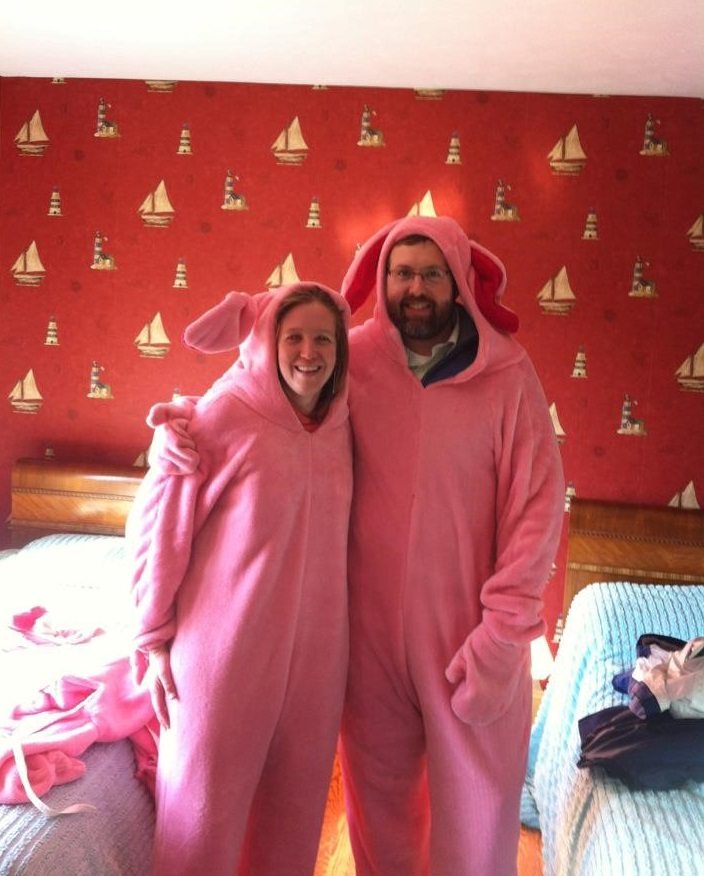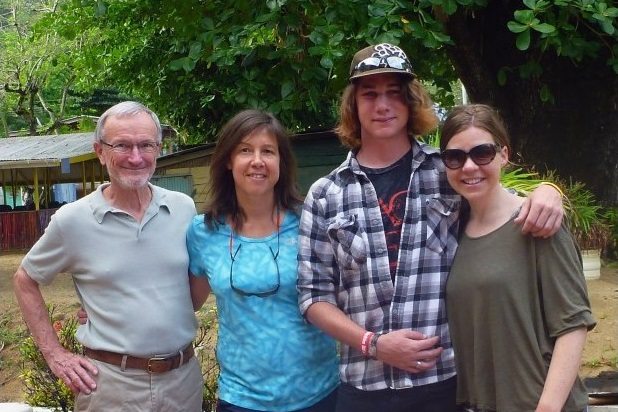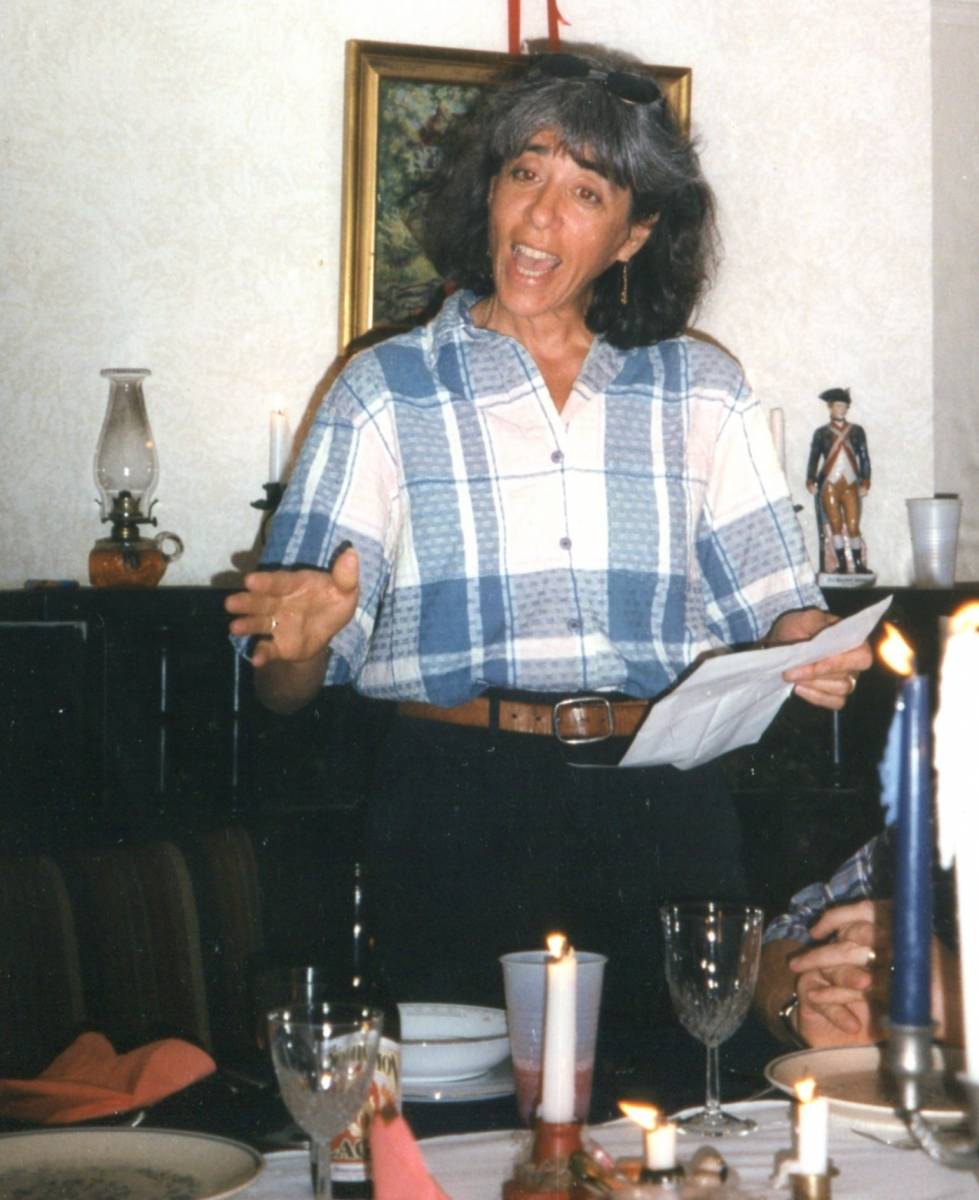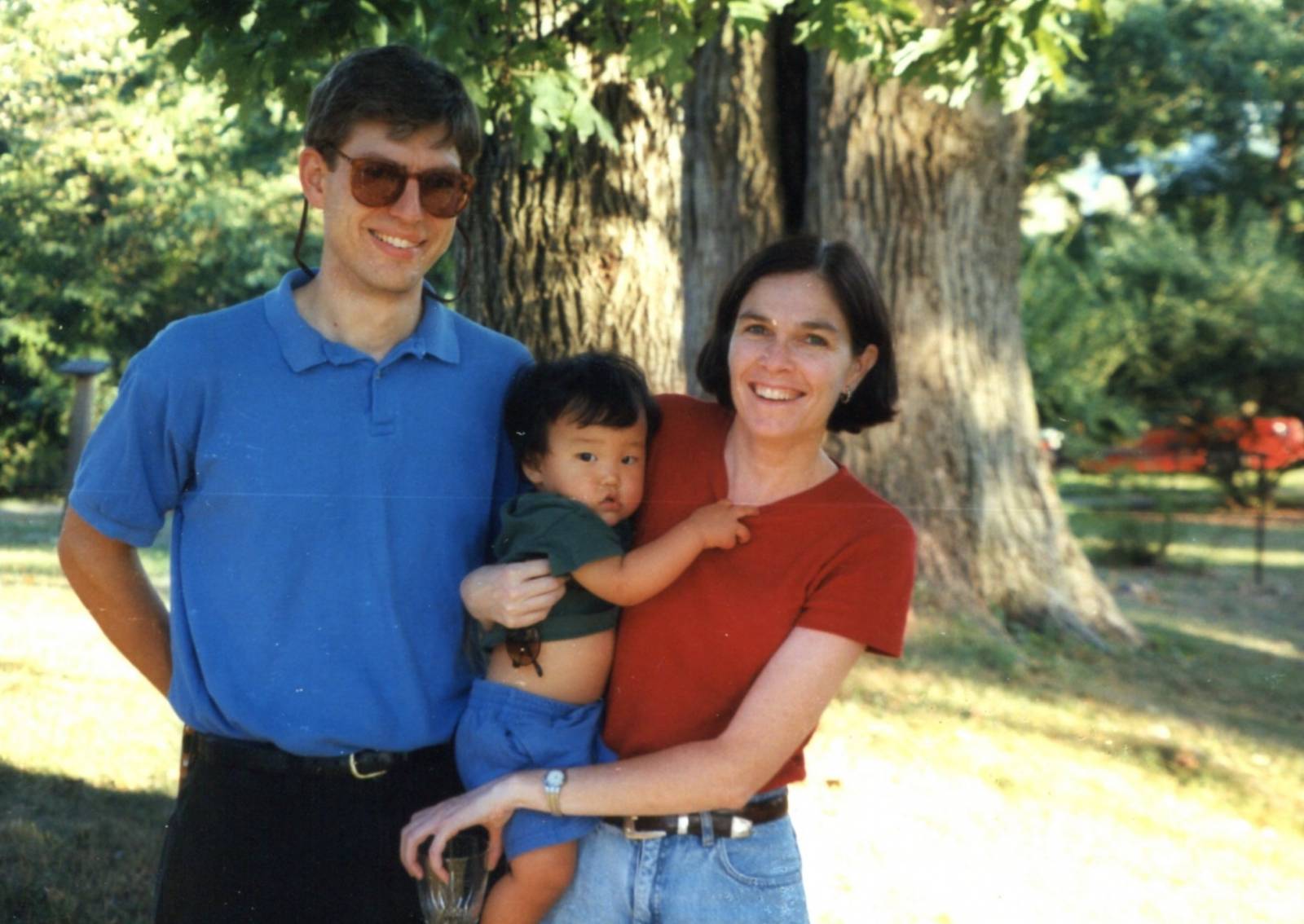NCHH30: Throwback Thursday
Have you heard that NCHH recently reached a major milestone? That’s right, we celebrated 30 years of “Better housing, better health” on September 4, 2022! As we look back fondly at three decades of service, we wanted to share photos of current and former staff who’ve made us what we are today, plus friends, family, allies, and other odds and ends. Look for a new throwback photo every Thursday.
Gallery 3
This gallery collects our Throwback Thursday photos for weeks 27 through 39. You can revisit the previous galleries here: Gallery 1 | Gallery 2
Week 27: December 1, 2022
Last week, we reached the halfway point in our look back at 30 years of NCHH memories, so why not kick off the second half of this campaign with one of our all-time favorite images?
This throwback photo of board members Ron Sims and Dr. Joycelyn Elders, was snapped during NCHH’s Board of Directors meeting at Georgetown University’s Leavey Conference Center in Washington, DC, December 7, 2010.
Ron Sims served as King County (Washington) Executive from 1997 to 2009, when he was tapped by President Barack Obama to become the new deputy secretary at the Department of Housing and Urban Development (HUD). Mr. Sims spent just over two years in the position before resigning to spend more time with his family, a decision that also signaled the end to his time with us.
But on this night, Deputy Secretary Sims was spending the evening with us, and we were happy to introduce him to Dr. Joycelyn Elders, best known as the U.S. Surgeon General during the Clinton Administration (1993-1994). Dr. Elders also served on NCHH’s board from 2007 to 2019, where she was adored by all who met her.
Mr. Sims and Dr. Elders appear thrilled to be meeting one another. Big thanks to the great Lloyd Wolf for capturing the moment.
Photograph ©Lloyd Wolf (www.lloydwolf.com).
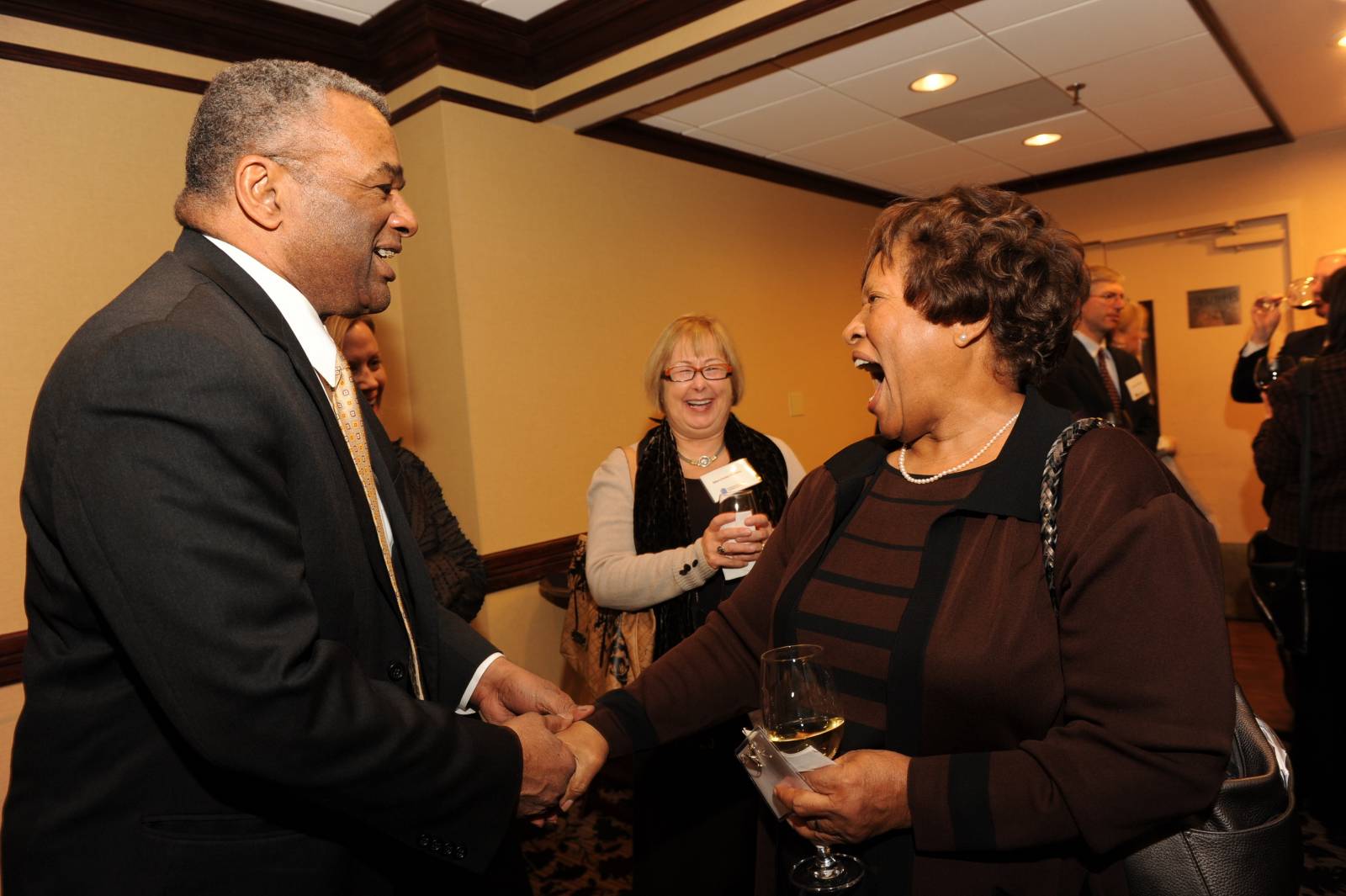
Ron Sims shakes hands with Dr. Joycelyn Elders, while Rebecca Morley, Marcheta Gilliam, and Jonathan Wilson look on, Washington, DC, December 7, 2010.
Week 28: December 8, 2022
Our last two throwback photos have featured members of NCHH’s board, and this week does the same. We didn’t plan to do this—that’s just how it worked out. But why not share photos of NCHH’s board when so many of our directors have given so much of themselves to support our work?
And it doesn’t hurt that these guys were kind enough to send us this photo specifically for our Throwback Thursday series.
Read Holman and Chris Jones are incredible guys, and we’ve been so fortunate to have them in our inner circle for the last several years. Dr. Christopher Jones, formerly NCHH’s board president, is an immensely intelligent, thoughtful, and talented person who holds advanced degrees in both nuclear engineering and urban planning. When we first met Chris (circa 2013), he was the executive director for the Dudley Street Neighborhood Initiative in Roxbury, Massachusetts; but he eventually worked his way back to his home state of Arkansas, where he served as executive director and lead maker at the Arkansas Regional Innovation Hub. Most recently, he jumped head first into the political arena by running for the office of governor. Chris’ time on our board is winding down, but we predict that he and NCHH will work together again very soon.
Read’s NCHH story is unusual. It’s normal for organizations to seek out great people for their boards, but we met Read over the phone one day when he was looking for an organization to partner with on some healthy homes initiatives he was working on—initiatives, plural. It happened that Read was a former White House policy advisor, giving him an insider’s understanding the executive branch of our government. While working in DC, he became interested in healthy homes work; and he decided, after his White House gig ended, to apply his talents to those challenges, which led him to us. We took Read’s message and set up a call, but we were already so impressed by him that we asked him, almost immediately, to consider joining our board. As they say, “Sometimes, you just know,” and they are right: We knew.
Read and Chris are two of our favorite people, and working with them has been an absolute gift. We can’t thank them enough for their service.
We’ll confess that we don’t know exactly when this get-together between Read and Chris took place—they guessed it was “on or around December 8, 2021,” and this resulted in a bit of sleuthing for…well, no good reason, really. Anyway, we were able to figure out that the Golden State Warriors and the Portland Trail Blazers were the two teams playing on the TV behind Chris, and the crawl on the TV references “Wednesday’s win vs. Trail Blazers” giving the impression that Wednesday, (December 8) was in the past. If our logic is correct, then this photo was taken either December 9 or 10 (as Golden State’s next game is also referenced on the crawl, as a future event), with December 9 being most probable. We’re going with Thursday, December 9. We’re not sure about the location, though—check back for an update sometime between tomorrow and our 35th anniversary.
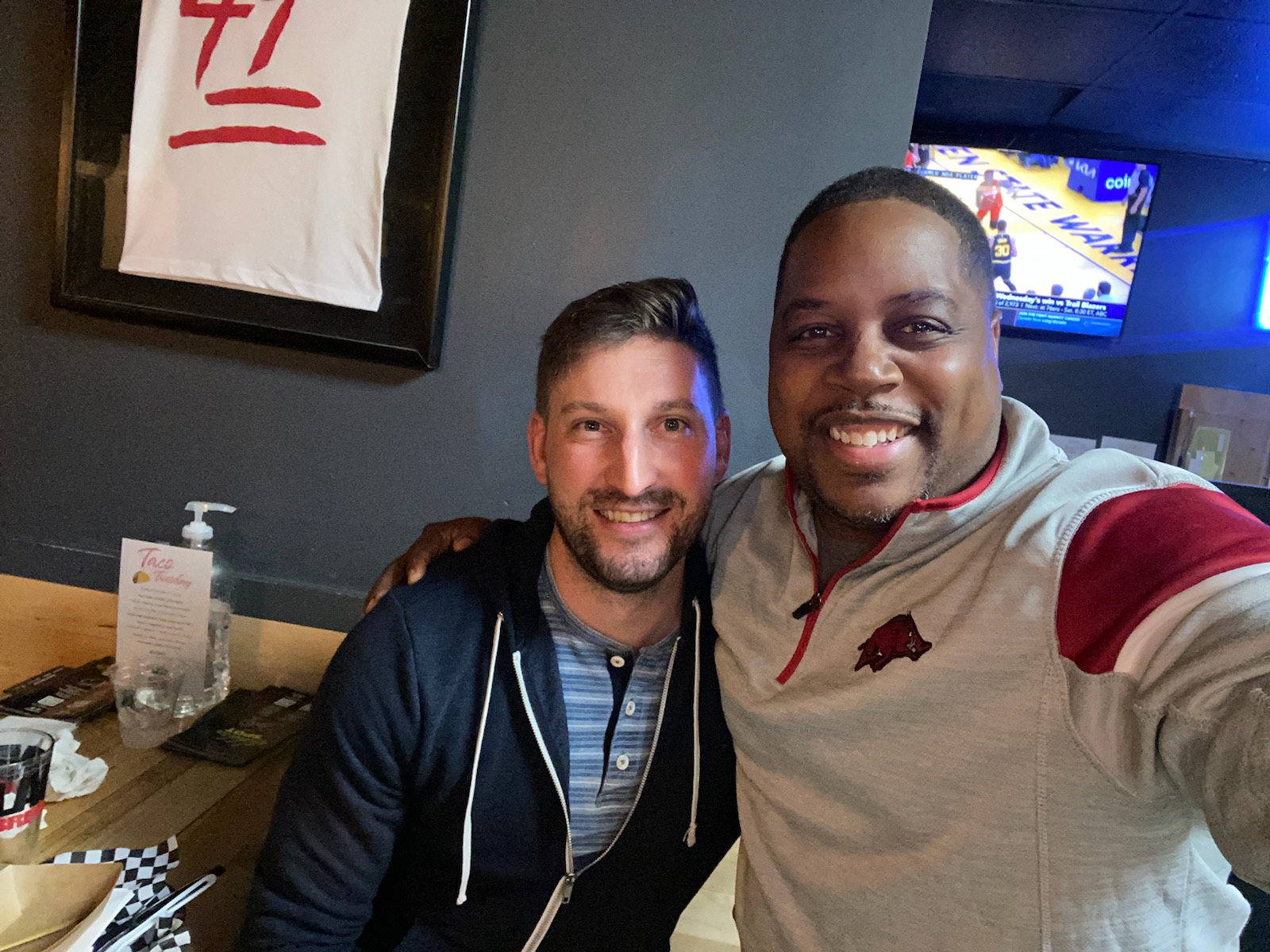
Board members Read Holman (left) and Christopher Jones catching up over lunch, December 9, 2021.
Week 29: December 15, 2022
As a public health organization, we at NCHH took the pandemic seriously, and that has meant working 100% remotely since March 2020. Though we see each other often via Microsoft Teams and on so many Zoom calls, we haven’t had many opportunities to get together socially.
This night at Topgolf in Germantown, Maryland—December 7, 2021—was the first time since the lockdown began that we got together to blow off steam and have some fun. We chose an outdoor venue for the obvious reasons, and it was a relief that Topgolf supplies enormous heaters because it was a chilly night.
Topgolf is an interesting place. Approaching the building from the front, there’s a lot of glass, brick, and concrete; but there’s nothing that prepares you for the fact that the entire back half of the building is missing. The half that is there feels a little like a sports bar and a lot like a bowling alley—with two major differences: First, there are three levels stacked on to one another, and second, stepping over the foul line at a bowling alley doesn’t result in the offender falling though the floor. The good news is that there’s a net to catch you if you go over…but it’s probably best not to go over.
Sadly, some of our best golfers weren’t able to join us, which is one reason we’ll have to do this again soon. Still, 50% of the team enjoying a night out is better than none, so we’re calling it a success.
In attendance were Laura Fudala and Jonathan Wilson, both of whom appear to know a thing or two about golf, and Amanda Reddy, who racked up a surprisingly good total for someone who does not golf. Chris Bloom gripped it and ripped it over and over again, not that his efforts were reflected in his scores (only one score earned the “Cinderella story” label). Anna Plankey and Sarah Goodwin had some experience with miniature golf but had never really had the opportunity for Big Swings before tonight. Quick learners, it was great seeing them get comfortable and confident and smack balls across the green. Also joining us was Jacob, Sarah’s partner, and he’s no slouch with a driver, either.
Will you find us on the PGA tour in 2023? No, you will not. But you could very well find us here again. We had a great time, and the drinks and food were delicious. We’d recommend this kind of event to anyone.
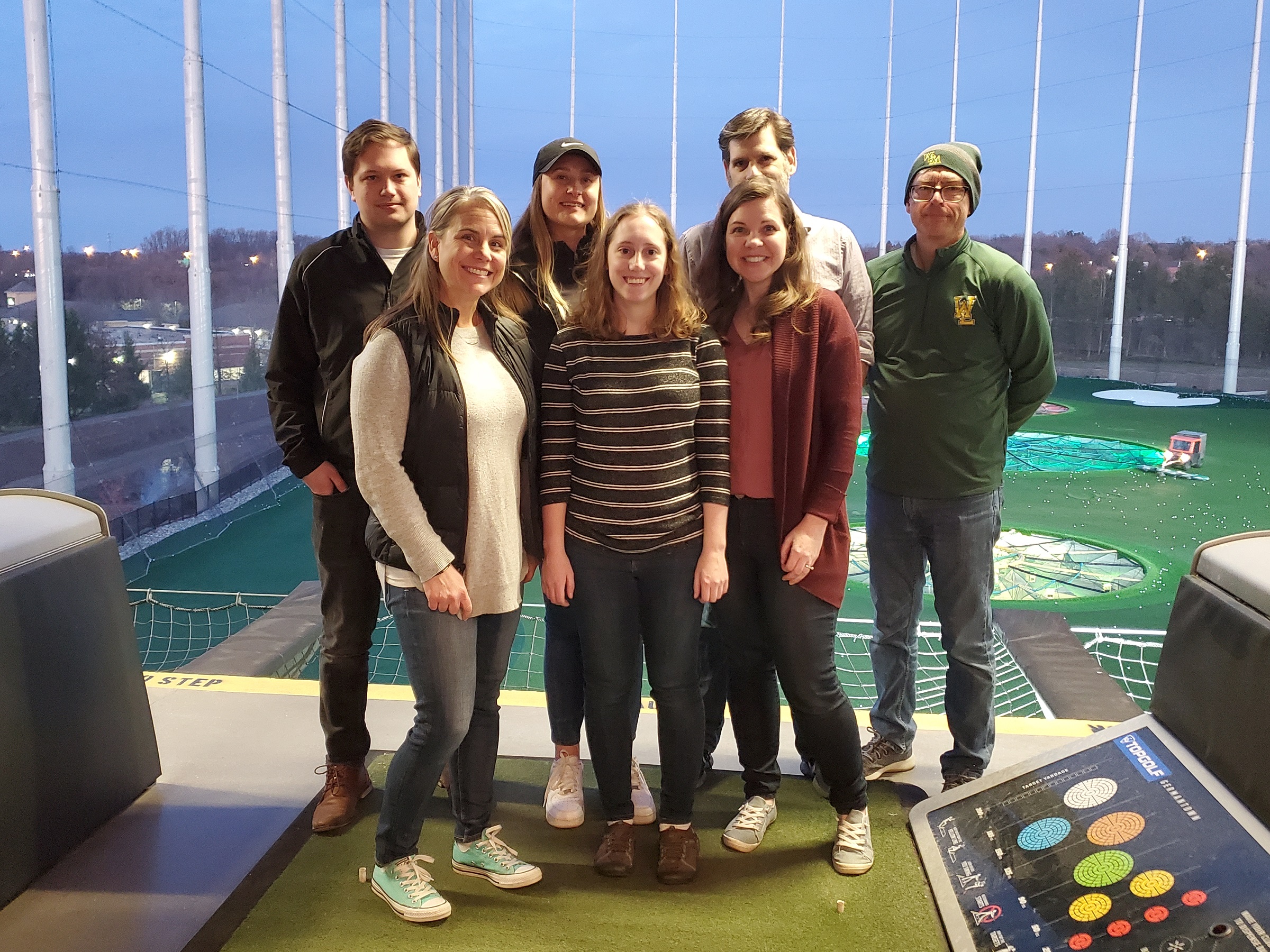
NCHHers at Topgolf, Germantown, Maryland, December 7, 2021. Front row: Laura Fudala, Sarah Goodwin, and Amanda Reddy. Back row: Jacob (Sarah’s partner), Anna Plankey, Christopher Bloom, and Jonathan Wilson.
Week 30: December 22, 2022
This is a gift from all of us to you: one of our all-time favorite photos of two of our all-time favorite people. This picture of Ruth Lindberg, NCHH program manager from 2010-2013 (now with The Pew Charitable Trusts), and Phillip Dodge, NCHH’s marketing and development officer from 2007 to 2015 (now executive director with the Downtown Columbia Partnership), was snapped during the off-hours of a work trip to Cleveland back in—we think?—2011. (No one’s sure, really). Anyway, Phillip and Ruth are both fans of the modern holiday classic, A Christmas Story, and they were thrilled to tour the house where the movie was filmed. But they were even more excited when they discovered these adult-size bunny jammies, resulting in what is possibly the greatest throwback ever. Aww, we miss those guys!
Obviously, we’re posting this because Christmas is just three days away, but we at NCHH wish everyone the safest and happiest of holidays this season, whether you and your loved ones observe Christmas, Hanukkah, Kwanzaa, the winter solstice (which was yesterday), or a “Festivus for the rest of us.”
Week 31: December 29, 2022
As 2022 winds to a close, we hope that all of you are enjoying a happy, healthy, and safe holiday season, and wish the best for you all in 2023. While the problems that organizations like ours strive to correct still exist— and likely will this time next year as well—the healthy housing movement continued to make progress over the past 12 months, and forward motion is worth celebrating. Every time a law is created to protect Americans from lead poisoning or make healthcare services available or easier to access, it’s progress.
On that topic, scientist Kelly Miller, observed, “I see that the path of progress has never taken a straight line, but has always been a zigzag course amid the conflicting forces of right and wrong, truth and error, justice and injustice, cruelty and mercy.” We’re sure you’ll agree that Kelly Miller was a very wise man, because his description sounds a lot like the history of the healthy homes movement.
So, how can we make more progress in 2023?
One way to further progress is to communicate, to work with as many others as possible who are involved in your line of work—but also stakeholders with whom you wouldn’t normally interact: property inspectors, real estate professionals, insurance companies, community action agencies, medical professionals, politicians, attorneys, and concerned citizens. As an example, we’d like to direct you to another blog on this site, “The Choreography of Collaboration,” authored by our longtime friend and partner, Dr. Katrina Smith Korfmacher, about the incredible group of disparate stakeholders that came together to form the Rochester Coalition to Prevent Lead Poisoning and fight for healthier home environments in Rochester, New York. As a result of their work and the continued efforts of many involved, Rochester has one of the strongest lead ordinances in the country.
A similar collaborative effort resulted in a new lead law for the city of Pittsburgh, Pennsylvania. Previous efforts had fallen short of the target, but the “Get the Lead Out, Pittsburgh” public awareness campaign brilliantly brought people together, armed them with the evidence base, and created a case for lead safety that was strong enough to overwhelm its opponents and secure a historic victory for the residents of Allegheny County.
Make no mistake, the zigs and zags Kelly Miller described will still be there, even with collaboration; but, despite the hiccups, it’s possible to go farther faster with friends than by going alone. So, make time to get together with people you know in 2023, but also with new allies from other organizations.
As for this week’s photo, it’s from an NCHH board dinner on December 6, 2018, at Karma Modern Indian, where, as you can see, they really spoiled us. (Apologies to our Darcy Scott for catching her in mid-bite.) What you don’t see are the hours of discussion that preceded this dinner and the hours of discussion that followed it—hours spent working on how to make homes healthier for all Americans.
We wish you all a safe, happy, and healthy new year full of discussion and collaboration—preferably over delicious meals.

Visible on the left side of the table: Joseph Feldhaus (guest of Ms. Gillam), Marcheta Gillam, Dr. Joycelyn Elders, unidentified guest of Dr. Elders, Dr. Patrick Chalk (obscured), and Saul Ramirez. On the right side of the table: Dr. Christopher Jones (obscured), Mark James, Elyse Pivnick, Joan Cleary, Mike Rizer, and Darcy Scott, NCHH policy director. Background: Unidentified Karma Modern waitstaff.
Week 32: January 5, 2023
In our first throwback of the new year, we recall Jonathan Wilson’s trip to New Orleans in December 2005. Jonathan visited New Orleans as part of NCHH’s study of the effectiveness of flood/mold cleanup in the aftermath of the substantial flooding caused by Hurricane Katrina. Look in the background of this photo (taken December 22, roughly four months after the storm) and you’ll note mold growth both on the wall and reflected in the mirror, which is why Jonathan’s bundled up so securely in his personal protective equipment (PPE)—you really can’t be too careful when working with mold, a point we stressed in Creating a Healthy Home, the how-to guide we published in 2006 with our friends at Enterprise Community Partners, NeighborWorks America, and Neighborhood Housing Services of New Orleans.
Funded by the Robert Wood Johnson Foundation, Creating a Healthy Home proved to be an extremely popular and necessary resource: By early 2008, we’d shipped our entire inventory to communities around the country in the aftermath of various storms and printed a second batch for communities in need. New editions of the flood cleanup guide—now called A Field Guide for Flooded Home Cleanup and it’s Spanish-language counterpart, Guía Práctica para la Limpieza del Hogar Inundado—were introduced in 2019 to incorporate the latest safe cleanup practices. We also created a new e-learning course, Safe Cleanup of Your Flood Damaged Home as another way to share this important information.
We do hope you’ll take a moment to download your copy of the flood cleanup guide. While the guide was written with major storms in mind, it’s loaded with information that would be helpful in the event of a smaller disaster, such as a burst pipe. Like insurance, you don’t need it until you need it, but unlike insurance, it’s free.
If you’re interested in learning more about our work in Louisiana, be sure to check out “Mold and Endotoxin Levels in the Aftermath of Hurricane Katrina: A Pilot Project of Homes in New Orleans Undergoing Renovation.” Jonathan and NCHH’s Rebecca Morley contributed to the article.
On a related note, our team recently invested a considerable amount of time creating and curating additional resources related to hurricanes and other climate-related disasters. You’ll find a wealth of information to protect yourself and others before, during, and after hurricanes and other similar disasters at Emergency Preparedness and Response: Hurricanes.
Hurricane season doesn’t officially begin until April, but flooding is a potential threat all year round, and any home anywhere can be affected.
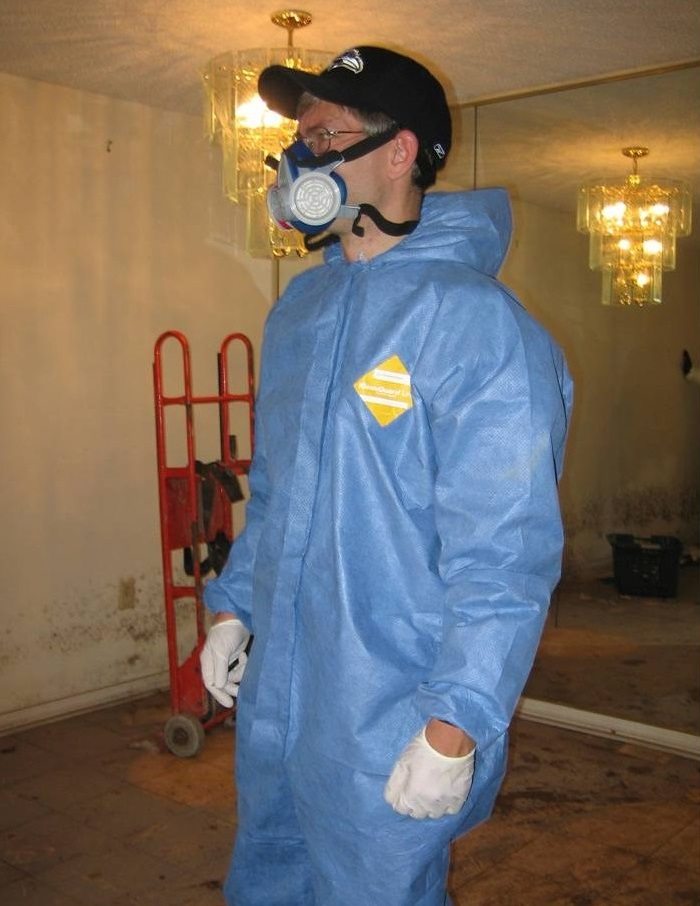
Bundled in personal protective equipment, Jonathan Wilson visited New Orleans in December 2005 to study the effectiveness of flood and mold cleanup in the aftermath of Hurricane Katrina.
Week 33: January 12, 2023
With frigid weather and harsh winter storms battering the country, we’re reminded of this throwback to April 2013 featuring NCHH’s Sherry Dixon and Amanda Reddy, along with Bill Menrath (University of Cincinnati) and Sherry’s nephew Brian vacationing in sunny Tobago. Sherry was already a certified rescue scuba diver, but Amanda and Bill both earned their scuba certifications while on the island. We wish we were there this month!
But seriously, winter weather is no laughing matter—that’s why NCHH created a new toolkit last year called Emergency Preparedness and Response: Extreme Cold. The toolkit contains over 25 new or established resources related weathering cold temperatures safely, and we think you’ll be impressed at how comprehensive it is. Check it out when you have a few minutes.
Week 34: January 19, 2023
This week’s throwback comes from photo snapped on January 14, 2004, at an unnamed watering hole in an unnamed town* by an unknown photographer. The picture’s an unusual choice for our throwback series because no one in the photo was working for NCHH on the date it was taken; however, two of the women would join our organization several years later.
The photo features future NCHH Director of Grassroots Advocacy Amy McLean – hugging Yvonne and Cassandra (last names would be great if anyone has them) – who came to NCHH in May 2011, over seven years later. Amy was with us for just over two years before moving on to the next chapter in her career, this time with United Illuminating back in her home state of Connecticut. We hear that Amy has recently rejoined United Illuminating, which is great news because we love a good reunion between old friends. We wish Amy great success in her latest venture.
You may also recognize Jane Malone out in front. At the time this picture was taken, Jane was working as the Alliance for Healthy Homes’ housing policy director, a position she’d held since 1998. Jane joined our family via a merger between the Alliance and NCHH, which was announced on January 20, 2010 – the other reason why we chose this photo for this week.
Jane served as NCHH’s director of policy for over four years. Jane is the national policy director at the Indoor Environments Association (formerly known as the American Association of Radon Scientists and Technologists, or “AARST”), a position she’s held since January 2015. NCHH and AARST have collaborated on a few projects together over the last several years (such as our EARTH study; read the article with Jane, “Evaluating and Assessing Radon Testing in Multifamily Housing“), and it’s always a pleasure to work with Jane.
This toast is to old friends and colleagues.
*We’re told it’s the Wharf Rat in the Fell’s Point neighborhood of Baltimore, but we’re unable to substantiate this.

Jane Malone and Amy McLean with Yvonne and Cassandra, January 14, 2004.
Week 35: January 26, 2023
We chose this week’s throwback image because we have great news, which we’ll get to in just a minute. But first, introductions are in order: On the left, we have Don Ryan and Tom Vernon, who served faithfully on NCHH’s board of directors for many, many years. In the center is then-HUD Secretary Shaun Donovan and Rebecca Morley, NCHH’s executive director from 2000 to 2014. On the right is Mark James, also an NCHH board member at the time. Some of you will recall that NCHH worked closely with Mark James and the Community Preservation and Development Corporation on the DC Green research project. Since 2011, Mark has worked as an affordable housing developer for Urban Green LLC and recently founded a second organization, Heleos LLC.
The date was May 16, 2014, and the event was the public launch of the National Healthy Housing Standard, a collaborative effort between NCHH and the American Public Health Association. It was a proud day for all of us at NCHH, and we were so happy to be able to share this important document with the world at last. If you’d like to learn more about the National Healthy Housing Standard, visit this page on our site.
Now for the news: As part of our 30th anniversary celebration, NCHH has established an emeritus board to honor the critical role our past board members (and a select number of other key supporters, including former NCHH Executive Director Rebecca Morley) have played in our story and success. This is not some old-timers club, however—this group will work on several special projects that will help to further NCHH’s work. The kickoff emeritus board meeting was held January 18, and some members were visibly champing at the bit. We predict great things from this group!
When considering who among the many highly qualified individuals to chair this group, we chose to honor for their service both our longest-serving board chair, Dr. Tom Vernon, and the founding executive director of our sister organization, the Alliance for Healthy Homes, Don Ryan.* Needless to say, both gentlemen can speak volumes about healthy homes.
*Note that Don Ryan and the Alliance were instrumental in NCHH’s founding and eventually merged with our organization.
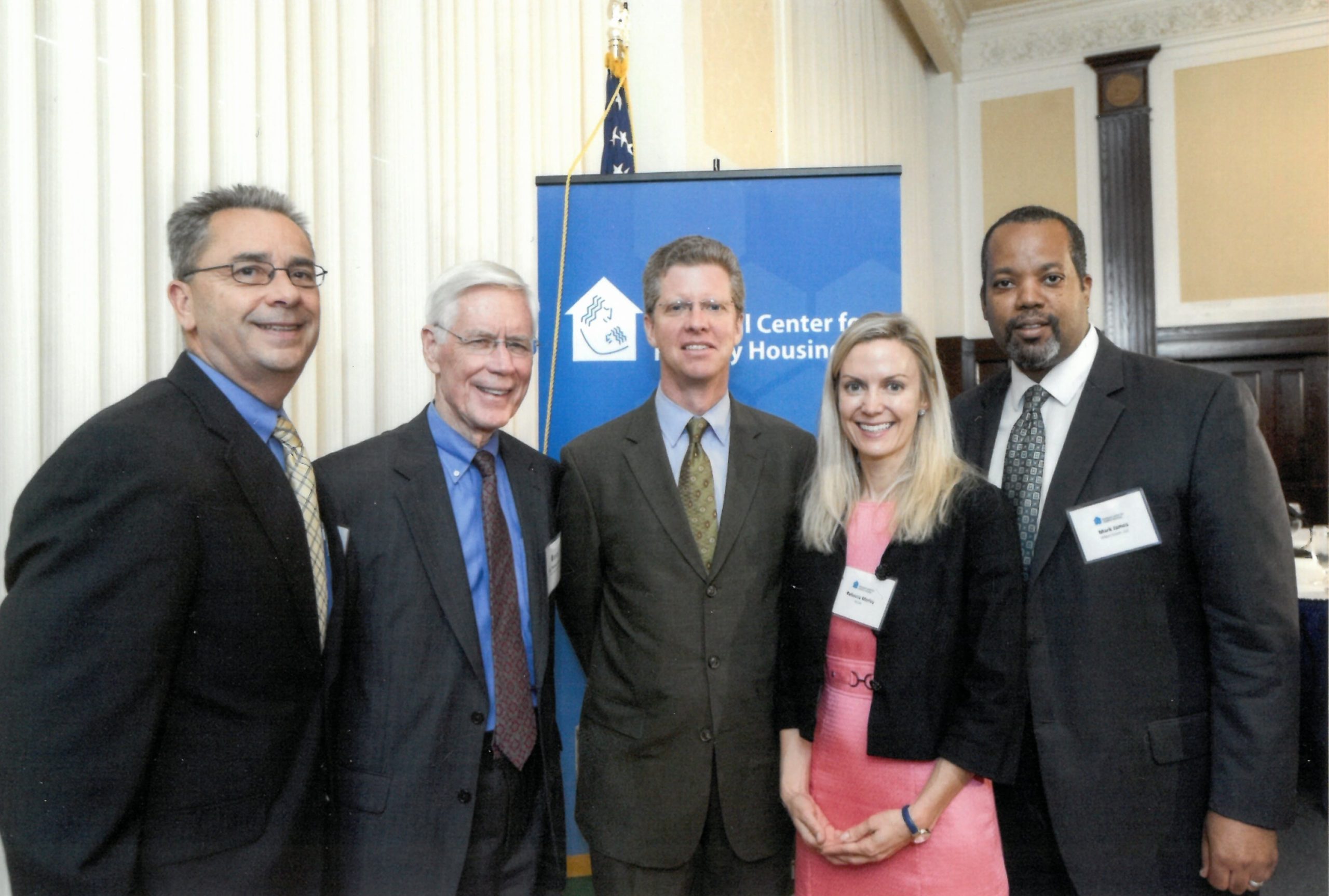
From left to right: NCHH board members Don Ryan and Tom Vernon, HUD Secretary Shaun Donovan, NCHH Executive Director (2002-2014) Rebecca Morley, and NCHH board member Mark James at the National Healthy Housing Standard launch event at the National Press Club in Washington, DC, May 16, 2014.
Week 36: February 2, 2023
This week’s throwback is a photo of Dr. Heidi Most, who served as a project manager from 1994 to 1999 (back when we were still the National Center for Lead-Safe Housing), which is when this photo was taken – specifically, at her going-away party.
Heidi was always very interested in holistic medicine, so it’s not surprising that she’s now a licensed acupuncturist, certified aroma therapist, and a certified qi gong teacher in Howard County, Maryland. (Some of us here at NCHH could probably benefit from Heidi’s talents, actually….)
Heidi was one of the many former staff who joined us in celebrating NCHH’s 25th anniversary back in 2017, and it was great to catch up with her that night. We miss Heidi and look forward to seeing her again soon! Maybe for NCHH35?
Week 37: February 9, 2023
This week’s throwback recalls our February 10, 2016 “Hill Day”—a semiannual event in which advocates from NCHH and several other nonprofit organizations, state and local health departments, scientists, and many concerned citizens meet in Washington, DC, to educate members of Congress about the importance of healthy home environments and encourage them to continue their support for healthy homes program funding.
Does it sound like fun? In many ways, it is. It’s also a lot of work for the organizers, but it’s so worth the effort.
Pictured here are members of several advocacy teams enjoying a much-deserved break at the revered watering hole, Bullfeathers of Capitol Hill, which was founded in 1979 and has been described as the place where “lobbyists take Hill staffers to down martinis.” History buffs may recall that “bullfeathers” was a family-friendly euphemism often used by President Teddy Roosevelt. This place is about as DC as it gets.
At the head of the table is our longtime friend and ally, Laura Brion, who runs the Childhood Lead Action Project in Providence, Rhode Island. We recently worked with Laura and company, the Environmental Defense Fund, and others on a civil rights complaint to EPA against the state’s largest drinking water utility. To Laura’s left is a citizen advocate whose name has unfortunately escaped us and Damita Hicks, an artist and advocate from the great state of North Carolina. Beside Ms. Hicks are Dr. Chris Rustin from the Georgia Department of Public Health and Paul Kowalski, who oversaw New Haven’s lead program until his retirement in 2019. To Paul’s left is Ron Peik, president of Massachusetts-based Alpine Environmental.
Leaning in opposite Ron is Dr. Gillian Mittelstaedt, director of the Partnership for Air Matters and the Tribal Healthy Homes Network—and the co-chair of the National Safe and Healthy Homes Coalition. Beside Dr. Mittelstaedt is Julie Kruse, NCHH’s policy director from 2014 to 2017, now with Family Equality, a national nonprofit dedicated to advancing equality for LGBTQ+ families. Next is Lenora Smith, executive director of the Partnership Effort for the Advancement of Children’s Health (PEACH) in Durham, North Carolina; and, last but not least, Jonathan Wilson, NCHH’s deputy director.
Our Hill Day experiences have always been great, but they somehow get better every year. Sarah Goodwin, Anna Plankey, and Darcy Scott on NCHH’s policy team help to ensure that the process runs smoothly each time. The citizen advocates play an important part in the process, of course, because they’re able to share their real-life accounts of how the healthy homes programs—or lack of a program—in their state either served them our failed them. You can read about some of the regular folks who helped to make the 2016 Hill Day a success here.
This year, the team is doing something different: not one Hill Day but three. Our crew will join other advocates for a climate-centered event on February 15, a second virtual event on February 22, and then a virtual lead and healthy homes event later this spring. If you’re interested in being a part of a future Hill Day group, get in touch with Sarah Goodwin.
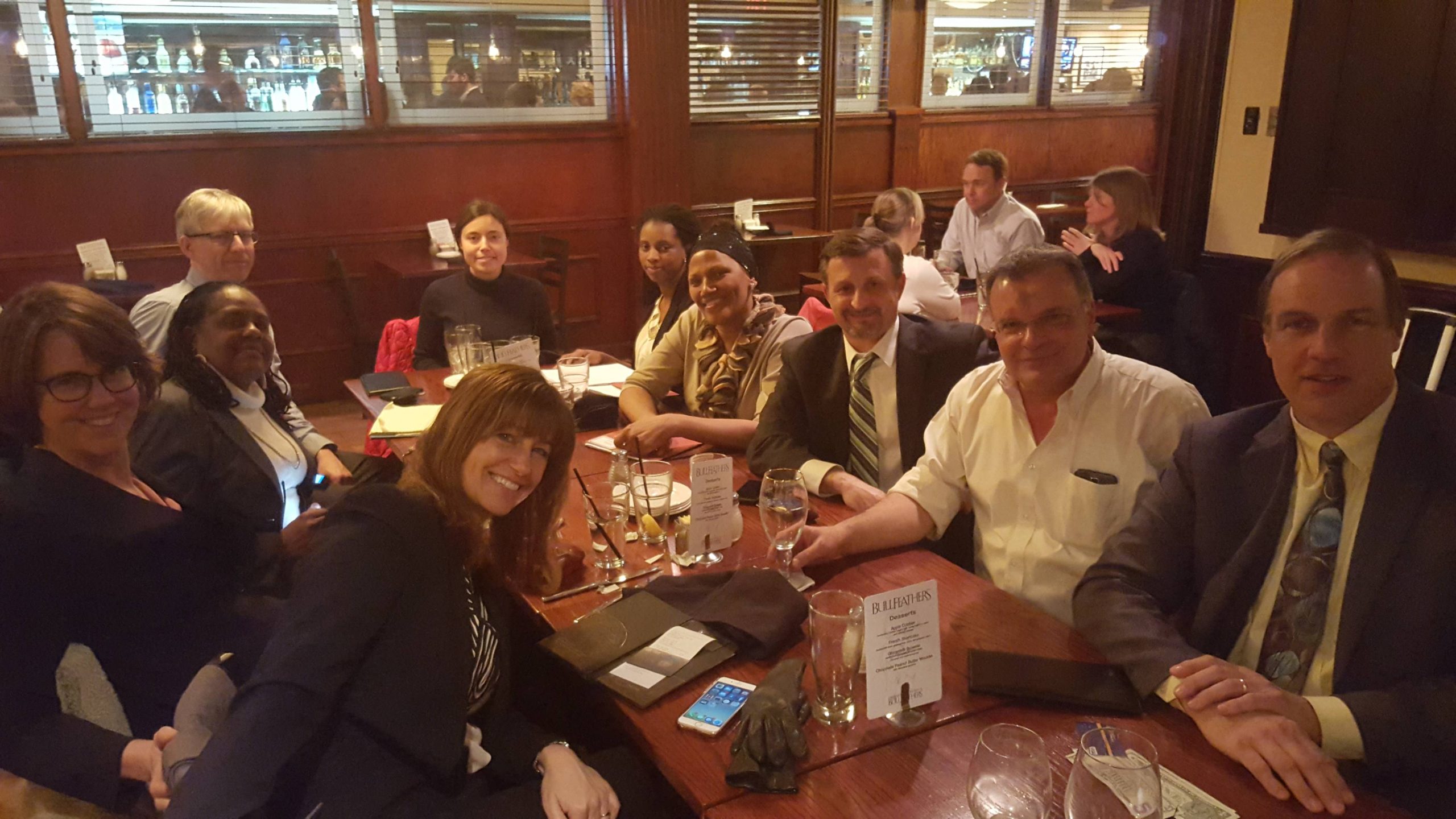
Clockwise from top: Laura Brion, an unidentified citizen advocate, Damita Hicks, Chris Rustin, Paul Kowalski, Ken Piek, Gillian Mittelstaedt, Julie Kruse, Lenora Smith, and Jonathan Wilson.
Week 38: February 16, 2023
This week, we’re throwing back to just a few years ago, when Jill Breysse met Dr. Mona Hanna-Attisha at a Public Health Grand Rounds session at CDC headquarters in Atlanta, Georgia.
The name may or may not be familiar to you; and that’s okay: Mona Hanna-Attisha is not exactly a household name—unless you were following the Flint water crisis several years ago.
Dr. Hanna-Attisha, a pediatrician at the Hurley Medical Center in Flint, learned from a longtime friend who happened to be an engineer and certified water operator that there was a heightened possibility of lead in the city’s water due to a recent decision to change the source from Lake Huron to the Flint River. Dr. Hanna-Attisha soon learned that the city wasn’t currently using corrosion inhibitors, so the water from the Flint River was corroding local water pipes (which contained lead) and allowing lead to leach into the water. Based on this startling information, Dr. Hanna-Attisha began a study that ultimately determined that the percentage of children in Flint with over 5 micrograms of lead per deciliter of blood skyrocketed from 2.1% to 4% since the switch from Lake Huron. Dr. Hanna-Attisha’s findings were questioned publicly by a spokesperson from Michigan’s Department of Environmental Quality; a subsequent report by the Detroit Free Press supported her findings, and the State of Michigan were forced to acknowledge that Flint’s water was not safe to drink.
While we in the public health world were aware of potential exposures from leaded water pipes, the disaster that Dr. Hanna-Attisha worked to expose helped to create the political will necessary to address the issue of lead in water at last. It’s taken years to get to this point, but as of mid-July 2022, the city reports that it has inspected 27,133 service lines in Flint, replacing 10,059 lead and galvanized lines in the process. It’s unfortunate, however, that so many Flint residents had to suffer the permanent and potentially life-altering effects of a months-long lead exposure in order to draw attention to the problem. It’s not really a fair trade, is it?
The latest development in this story comes from the top: Just over two weeks ago, the White House announced the Biden-Harris Get the Lead Out Partnership, which is committed to “supporting and accelerating the replacement of lead service lines across the country.” (Obviously, old water service lines aren’t the only source of lead contamination, but we say real commitment to action on any front is progress and should be applauded.)
So, it’s not surprising that Jill Breysse—who knows quite a bit about lead poisoning herself—would be interested in talking with a bona fide public health hero like Dr. Mona Hanna-Attisha, and on Friday, February 12, 2019, Jill attended A Renewed Commitment to Prevent Childhood Lead Exposure in the Post-Flint Era. Dr. Hanna-Attisha was the principal speaker at the event (which you can watch here; she’s introduced at the 13:20 mark), and Jill was able to catch up with her at the reception that followed for a quick chat, an autographed copy of What the Eyes Don’t See, and the great photo that we’re sharing with you today.
Thanks to both Jill and Mona for the great work they do to support public health.
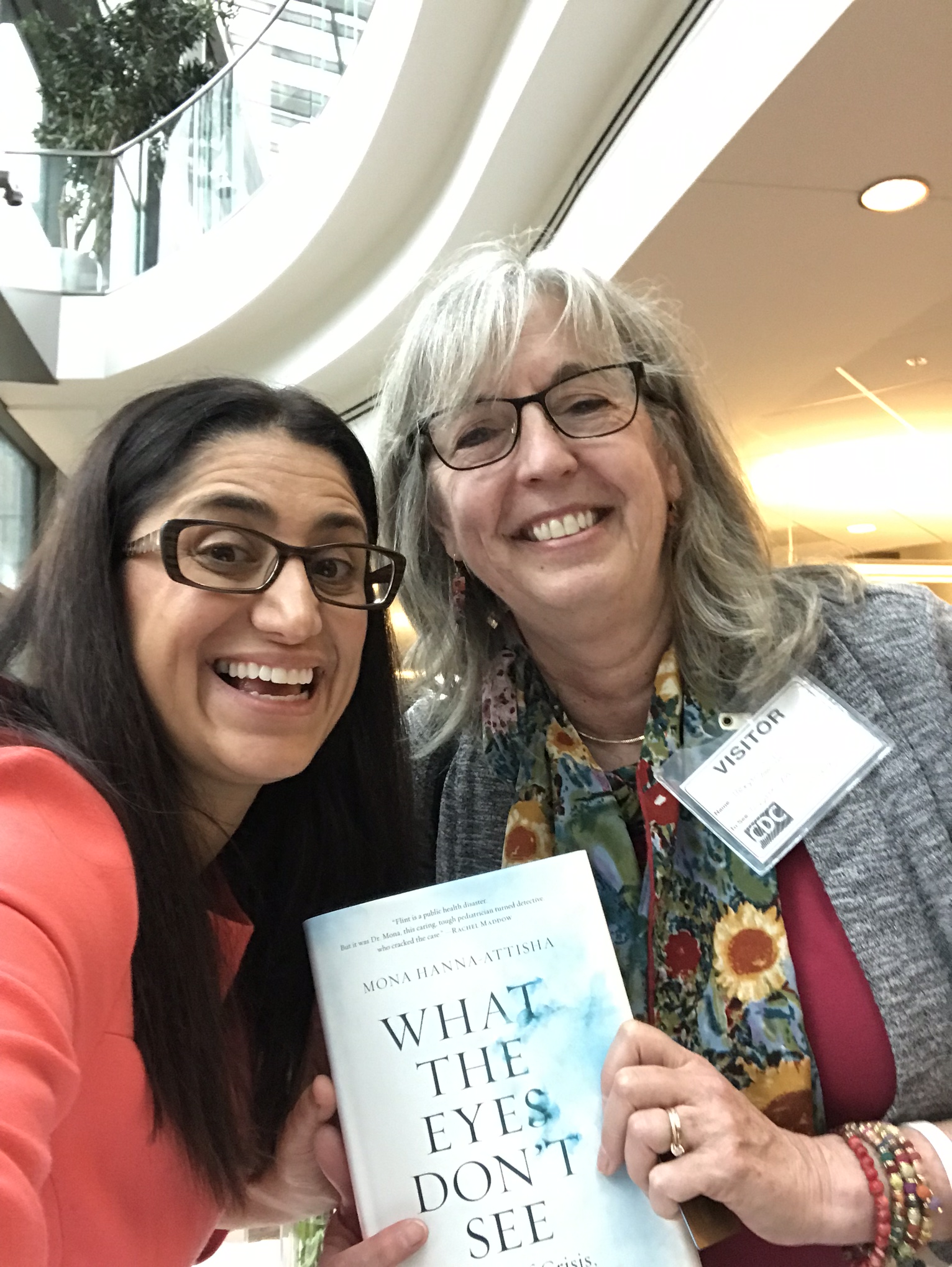
Noted pediatrician Dr. Mona Hanna-Attisha and NCHH’s Jill Breysse at CDC headquarters in Atlanta on February 12, 2019.
Week 39: February 23, 2023
This great throwback is also from Heidi Most’s going-away party back in 1999 (see week 36). That’s Jonathan Wilson with his wife, Alexa, and their young son, Sam, who actually finished college a few years ago—despite his youthful appearance here. Jonathan and Alexa probably weren’t much older in this photo than Sam is now.
Here’s a fun fact: We believe Jonathan was our first intern ever, joining the team back in 1993. These days, NCHH’s internship program looks much different than it did when Jonathan started out, and we’re really pleased with how it’s evolved. Credit for the program’s success is largely shared between Sarah Goodwin (also a former NCHH intern), Michelle Harvey, and Amanda Reddy, not to mention the interns themselves.
And speaking of internships, we’re pleased to announce that our shared summer internship with our friends at the Children’s Environmental Health Network (CEHN) is returning for its second year. Be sure to check out the Children’s Environmental Health and Healthy Housing Summer Fellowship, and get your application turned in by March 9. We should point out that this is just one of our internship opportunities—we actually offer internships a few times each year. You can learn more about NCHH’s internship program here.

